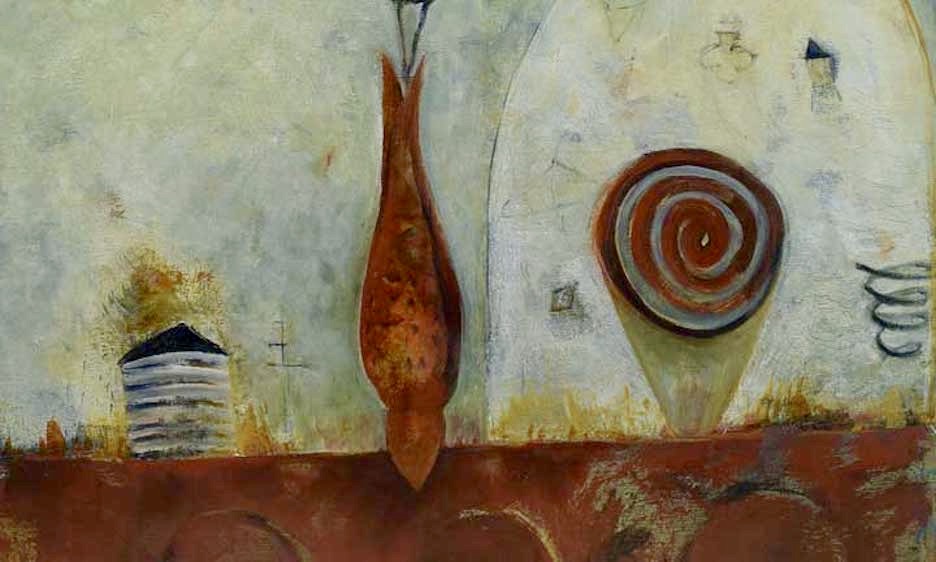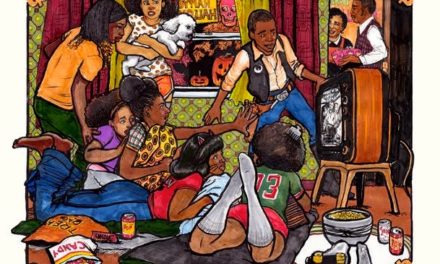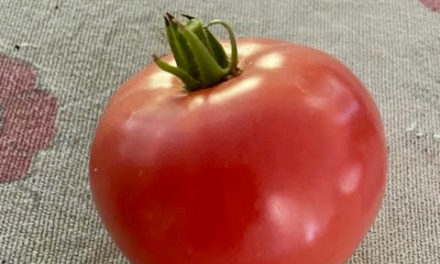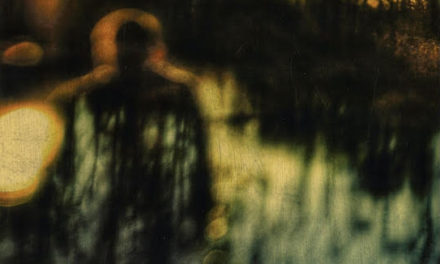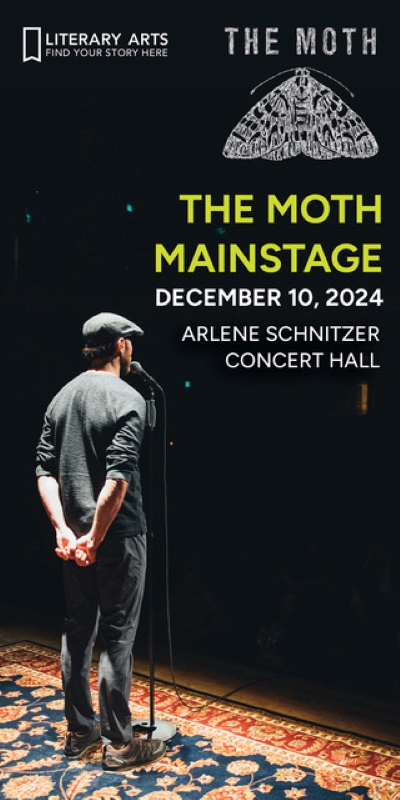(Above: “Hang On,” by Eugene artist Rebecca Mannheimer, who also is co-owner with her husband, Robin Irving, of Oregon Art Supply)
By Randi Bjornstad
In the Eugene-area art world, Rebecca Mannheimer describes herself as figuratively wearing two different hats.
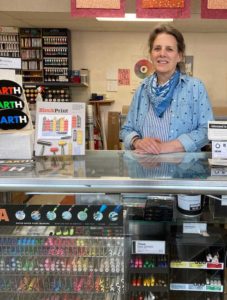
Rebecca Mannheimer, co-owner of Eugene’s Oregon Art Supply; she also is an artist in her own right; photo courtesy of Oregon Art Supply
One might be an artist’s beret, reflecting her lifelong career as a fine-art painter. The other could be an eyeshade, befitting her role as a shopkeeper, in Mannheimer’s case as co-owner of Oregon Art Supply in downtown Eugene.
“I try to keep the two somewhat separate,” Mannheimer said during a recent telephone instead of in-person interview, thanks to pandemic-era social distancing. “I run a store, and I am an artist.”
Art came first as she grew up in Portland, where “I had the desire to create at a very young age,” she recalled. “I didn’t always have the materials, but the desire was there.”
After high school, Mannheimer headed south to Eugene, where she studied ceramics at the University of Oregon, with mixed reviews from her parents.
“My mom liked the idea, but my dad definitely didn’t,” she said. “His constant question was, ‘How are you going to make a living?’ “
She left the UO after two years to work and travel as she charted her larger future.
“I traveled in Europe and saw all the art that I had studied, and I knew I didn’t want to leave it behind,” Mannheimer said. “So I worked and saved money, and then I went to art school at PNCA — the Pacific Northwest College of Art — in Portland, when it was still called the Museum Art School.”
The Museum Art School, a creation of the Portland Art Museum, changed its name to the PNCA in 1981 to give the school, which offered both bachelor’s and master’s degree programs in the fine arts, greater independence. Two years ago, after decades of considering the idea, the PNCA and the Oregon College of Art and Craft merged their programs. The PNCA estimates that more than 80 percent of its graduates work in the arts.
“I felt that was really the right place — back then the first-year class was only 50 students,” Mannheimer said. “It was the perfect place for me, and I spent all four years there even though I had two years of college already. I never regretted that decision, the foundation was so good.”
She began her studies thinking she wanted to pursue sculpture, “but the head of the department said in order to do that everyone had to pour bronze, and I thought that was a waste of time and too expensive,” she recalled. “So by my third year I had become solely a painting major.”
After graduation from the art school, Mannheimer began to teach, at community centers, Portland Community College, and the Oregon College of Art and Craft.
“That’s how I earned money, and I also got involved with the Blackfish Gallery, which was an artists’ cooperative. But that ate up so much of my time that I wasn’t having enough time to actually make art, so I left that after two years,” she said.
By then, she was married with two stepsons, “and that was my priority, so my art got put on hold. But that became a time of reflection and redirection, and it was really healthy. During that time I did some other things, like making cards and building furniture.”
Later, after her stepsons were grown and gone and her son was of an age that she could think again about creating art, a conversation with a friend coalesced her return to her earlier passion.
“As a kid, I was always quiet — I listened, but I didn’t talk,” Mannheimer recalled. “My friend asked me when we were talking about art, ‘What is it that you have to say?’ And that led me to realize that for me, art was about having a voice, so if art was my way to communicate, the next question was, ‘And how do I want to say it?’ “
She had always gravitated more toward abstract art than representational art, Mannheimer said, “and my work always has seemed to come from a conversation in my head, a dialogue. So others may not interpret my work the way I might.”
Her paintings always have included some element of drawing, Mannheimer said, but through the years they have evolved to blend drawing and painting, an amalgam of lines, shapes, and colors that invite individual interpretation.
The titles she gives her paintings are likewise enigmatic, often suggesting dual meanings: Inventory; Cargo; Diamond Land Mine; Double Cross; Reflection; Keyhole.
Mannheimer and her husband, Robin Irving, moved to Eugene in 1997, “and we were rather surprised that we ended up here,” she said.
“My husband had worked for Art Media in Portland, and when he left there a job came up in Eugene to manage Oregon Art Supply,” she recalled. “We moved here — temporarily — and then the owner of the store wanted to sell the business.”
Oregon Art Supply used to be located on East 13th Avenue, but not long after Mannheimer and Irving relocated to Eugene, “the store needed to change location, and part of Robin’s job was to find a place,” Mannheimer said. “He chose the location we have now at 10th and Pearl because the building was decorated with Betsy Wolfston’s ceramic tiles.”
The couple bought the business in 1999, “and this has been a really good location for us — Pearl Street is on such a main thoroughfare, and it’s easy for people to find us and to park.”
As with most small businesses, the coronavirus pandemic has taken a toll on Oregon Art Supply, Mannheimer said.
“It’s been a little harder — Robin has spent less time here because he’s older than I am and that is a concern, so I’ve been spending more time at the store,” she said. “But our customers are very happy that we are here and that we are taking precautions, with masks and limiting the number of people inside at one time and having curbside pickup. And I’m so grateful for staff coming in and dealing with the situation — there’s obviously a certain amount of stress in the situation.”
Not surprisingly, people who work at Oregon Art Supply tend to have art backgrounds themselves.
“People who apply to work here have to bring in their portfolios,” Mannheimer said. “You can get a lot of information about people by looking at their portfolios.”
Oregon Art Supply sponsors a staff art show every year or two, she said, when sufficient numbers of artists are ready to display their work. The store also shows small displays of other artists’ work as well as hosting art classes.
Mannheimer occasionally shows her own work in local galleries, including The Karin Clarke Gallery and the Maude Kerns Art Center, as well as participating in local holiday sales.
“Marketing is something I’m constantly trying to figure out,” she said, “but it takes so much time to do that, it interrupts being able to create the work.”
She also is part of a group of several women artists — it includes Ann Bumb Hamilton, Sarah Sedwick, Beth Robinson, Zoe Cohen, and Jenny Gray — who collaborate to put on a themed show each year.
“Last year, we did the Red Show, and this year the theme came from looking at paintings and paying attention to every inch of them,” Mannheimer said. “We decided to take a 24×24-inch square and divide it into 8×8-inch sections, so there are nine separate squares in which each square has to be able to stand individually as a complete work but together they also have to be able to ‘read’ as an overall piece.”
The members of the group come together to come up with the idea, “and then we go and do our own pieces, and we don’t see anyone else’s work until we get together to hang the show,” she said. “We all know each other’s work, and we all are part of the larger Eugene art community, but this is a special way to come together and inspire art that we probably wouldn’t do otherwise.”
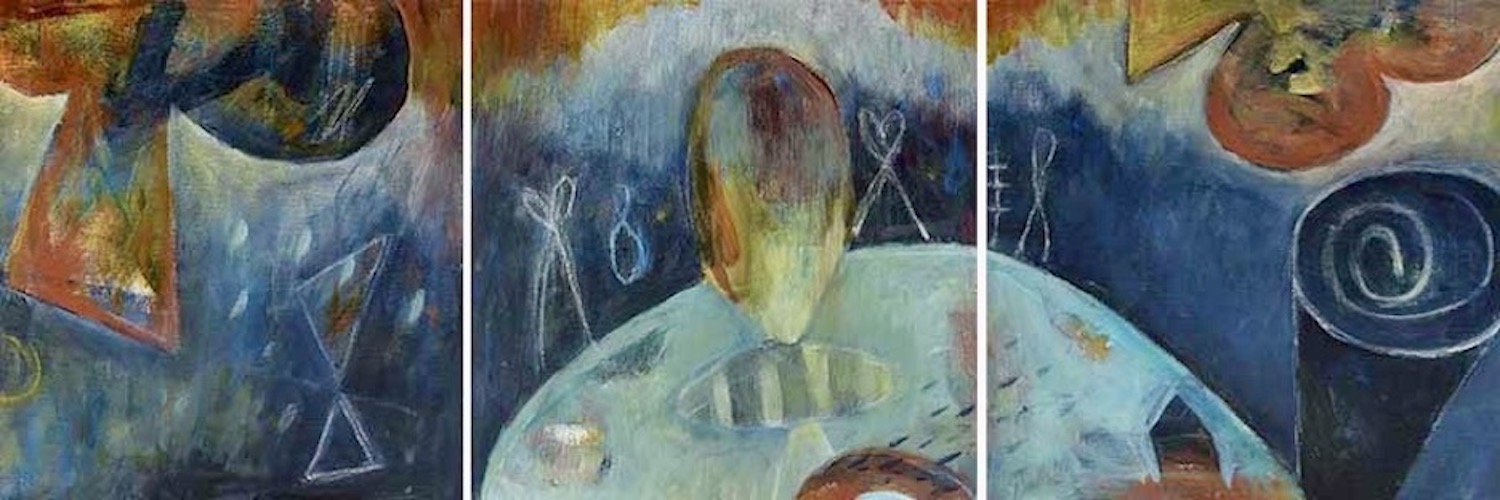
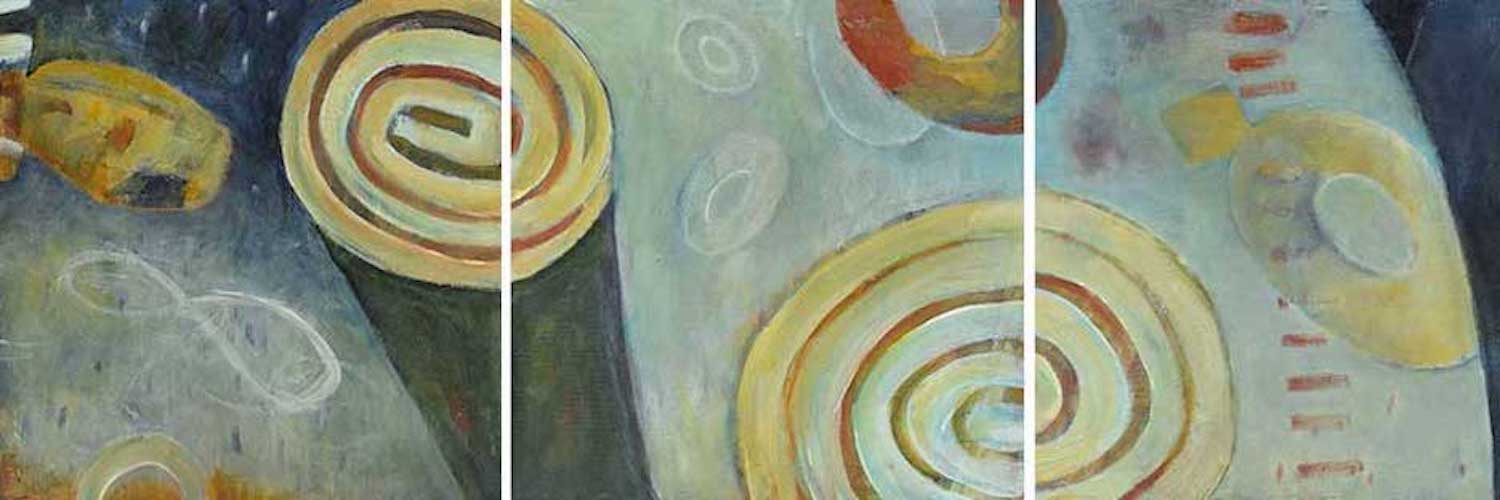
(Above: Some of the small square paintings that make up a larger work, part of a Rebecca Mannheimer project titled Searchlight; photos courtesy of the artist)

